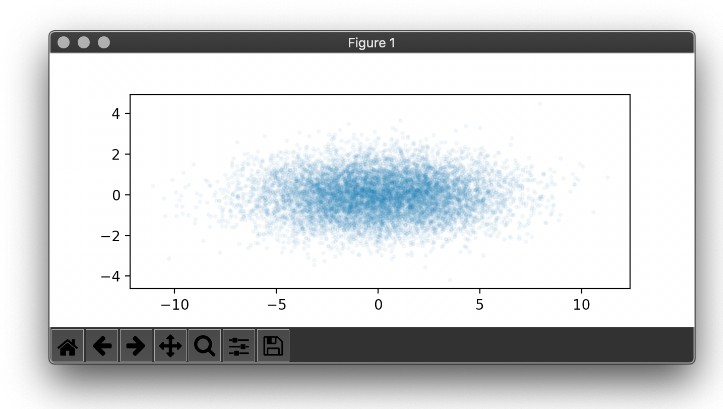Learning to Compose Visual Relations
This is the pytorch codebase for the NeurIPS 2021 Spotlight paper
Learning to Compose Visual Relations.
Demo
Image Generation Demo
Please use the following command to generate images on the CLEVR dataset. Please use --num_rels to control the input relational descriptions.
python demo.py --checkpoint_folder ./checkpoint --model_name clevr --output_folder ./ --dataset clevr \
--resume_iter best --batch_size 25 --num_steps 80 --num_rels 1 --data_folder ./data --mode generation
| GIF | Final Generated Image |
|---|---|
 |
 |
Image Editing Demo
Please use the following command to edit images on the CLEVR dataset. Please use --num_rels to control the input relational descriptions.
python demo.py --checkpoint_folder ./checkpoint --model_name clevr --output_folder ./ --dataset clevr \
--resume_iter best --batch_size 25 --num_steps 80 --num_rels 1 --data_folder ./data --mode editing
| Input Image | GIF | Final Edited Image |
|---|---|---|
 |
 |
 |
Training
Data Preparation
Please utilize the following data link
to download the CLEVR data utilized in our experiments.
Then place all data files under ./data folder.
Downloads for additional datasets and precomputed feature files will be posted soon.
Feel free to raise an issue if there is a particular dataset you would like to download.
Model Training
To train your own model, please run following command.
Please use --dataset to train your model on different datasets, e.g. --dataset clevr.
python -u train.py --cond --dataset=${dataset} --exp=${dataset} --batch_size=10 --step_lr=300 \
--num_steps=60 --kl --gpus=1 --nodes=1 --filter_dim=128 --im_size=128 --self_attn \
--multiscale --norm --spec_norm --slurm --lr=1e-4 --cuda --replay_batch \
--numpy_data_path ./data/clevr_training_data.npz
Evaluation
To evaluate our model, you can use your own trained models or download the pre-trained models model_best.pth from
${dataset}_model folder from link and put it under the project folder ./checkpoints/${dataset}.
Only clevr_model is currently available. More pretrained-models will be posted soon.
Evaluate Image Generation Results Using the Pretrained Classifiers
Please use the following command to generate images on the test set first.
Please use --dataset and --num_rels to control the dataset and
the number of input relational descriptions. Note that 1 <= num_rels <= 3.
python inference.py --checkpoint_folder ./checkpoints --model_name ${dataset} \
--output_folder ./${dataset}_gen_images --dataset ${dataset} --resume_iter best \
--batch_size 32 --num_steps 80 --num_rels ${num_rels} --data_folder ./data --mode generation
In order to evaluate the binary classification scores of the generated images, you can
train one binary classifier or download a pretrained one from link
under the binary_classifier folder.
To train your own binary classifier, please use following command:
python train_classifier.py --train --spec_norm --norm \
--dataset ${dataset} --lr 3e-4 --checkpoint_dir ./binary_classifier
Please use following command to evaluate on generated images conditioned on selected number of relations.
Please use --num_rels to specify the number of relations.
python classification_scores.py --dataset ${dataset} --checkpoint_dir ./binary_classifier/ \
--data_folder ./data --generated_img_folder ./${dataset}_gen_images/num_rels_${num_rels} \
--mode generation --num_rels ${num_rels}
Evaluate Image Editing Results Using the Pretrained Classifiers
Please use the following command to edit images on the test set first.
Please use --dataset and --num_rels to select the dataset and
the number of input relational descriptions.
python inference.py --checkpoint_folder ./checkpoints --model_name ${dataset} \
--output_folder ./${dataset}_edit_images --dataset ${dataset} --resume_iter best \
--batch_size 32 --num_steps 80 --num_rels 1 --data_folder ./data --mode editing
To evaluate classification scores of image editing results, please change the --mode to editing.
python classification_scores.py --dataset ${dataset} --checkpoint_dir ./binary_classifier/ \
--data_folder ./data --generated_img_folder ./${dataset}_edit_images/num_rels_${num_rels} \
--mode editing --num_rels ${num_rels}
Acknowledgements
The code for training EBMs is from https://github.com/yilundu/improved_contrastive_divergence.
Citation
Please consider citing our papers if you use this code in your research:
@article{liu2021learning,
title={Learning to Compose Visual Relations},
author={Liu, Nan and Li, Shuang and Du, Yilun and Tenenbaum, Josh and Torralba, Antonio},
journal={Advances in Neural Information Processing Systems},
volume={34},
year={2021}
}





